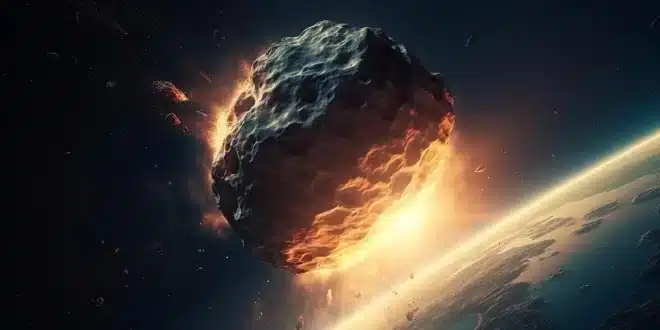NASA has issued an urgent alert after spotting a massive 410-foot asteroid named ‘2024 OC’ hurtling towards Earth at a frightening speed on Sunday, August 4. The asteroid is expected to make its closest approach at 16:10 UTC.
Asteroid 2024 OC, comparable in size to a large building, is traveling at a velocity of 35,986 km/h. It belongs to the Apollo group of asteroids, known for their close approaches to Earth.
These asteroids are classified as near-Earth objects (NEOs) because their orbits intersect with Earth’s path. While most NEOs pose no risk of collision, some are designated as potentially hazardous asteroids (PHAs) and require careful observation.
Asteroids larger than approximately 460 feet (140 meters) that come within 7.5 million kilometers of Earth’s orbit are considered PHAs. Despite its significant size, asteroid 2024 OC will pass Earth at a safe distance of 7.4 million kilometers, just missing the PHA criteria by a small margin due to its slightly smaller size.
NASA continues to monitor such objects to ensure they do not pose any threat to Earth.
Potential Impact of Asteroid 2024 OC
If an asteroid the size of 2024 OC were to collide with Earth, it would cause considerable damage. The impact of a building-sized asteroid could create a large crater, lead to regional destruction, and have catastrophic environmental consequences, including loss of life and property. However, NASA’s diligent tracking efforts ensure that 2024 OC will pass by Earth harmlessly.
Tracking Asteroids: NASA’s Efforts
NASA, along with other space agencies, uses a network of telescopes and advanced computing systems to identify and track NEOs. Although many NEOs do not come close to Earth, some approach at alarmingly close distances and are classified as PHAs, necessitating closer scrutiny.
PHAs are typically more than 460 feet (140 meters) in size, with orbits bringing them within 7.5 million kilometers of Earth. NASA’s Center for Near-Earth Object Studies (CNEOS) monitors all NEOs to identify any potential impact risks, ensuring Earth’s safety from these celestial objects.


